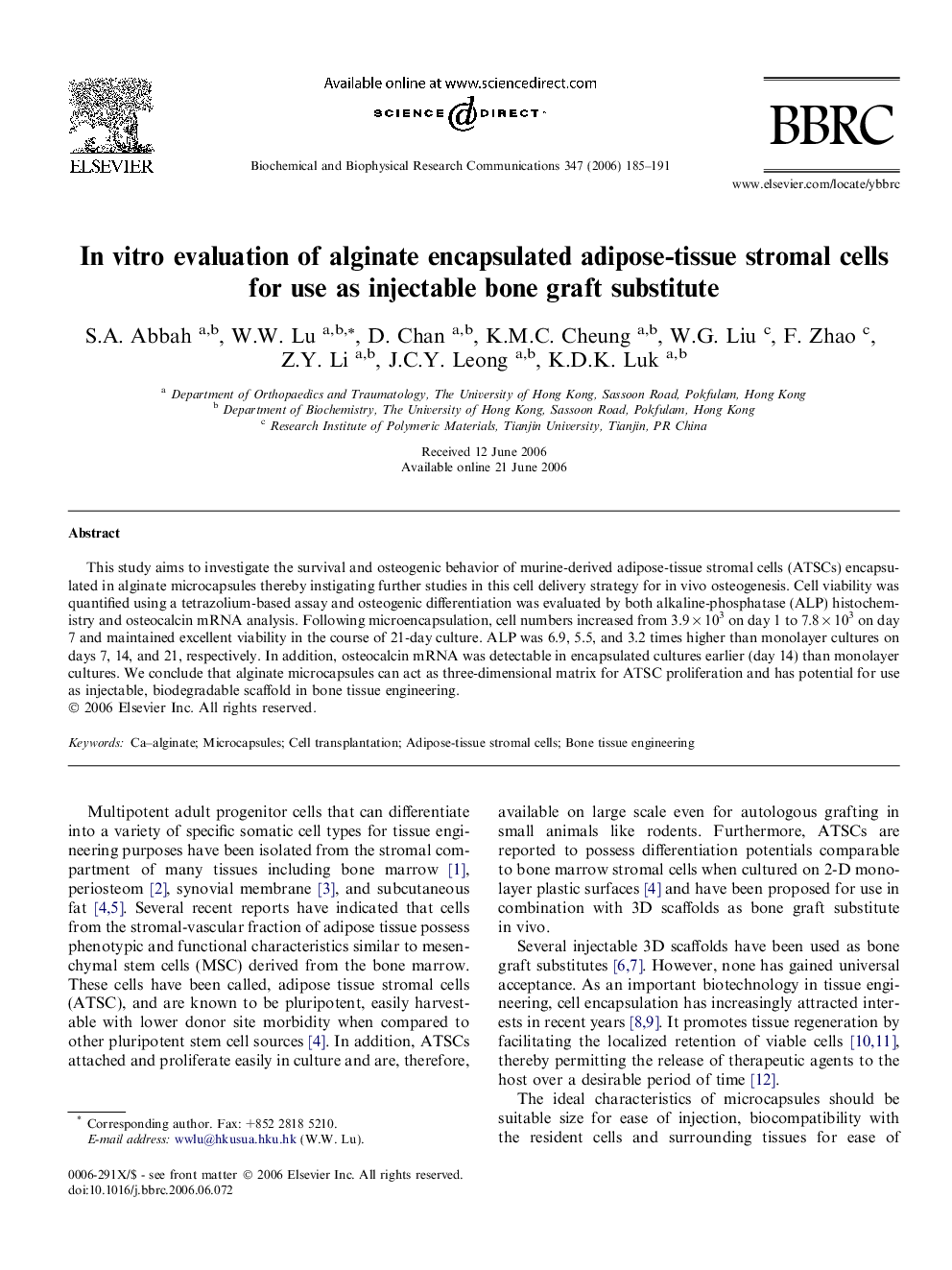| Article ID | Journal | Published Year | Pages | File Type |
|---|---|---|---|---|
| 1939181 | Biochemical and Biophysical Research Communications | 2006 | 7 Pages |
This study aims to investigate the survival and osteogenic behavior of murine-derived adipose-tissue stromal cells (ATSCs) encapsulated in alginate microcapsules thereby instigating further studies in this cell delivery strategy for in vivo osteogenesis. Cell viability was quantified using a tetrazolium-based assay and osteogenic differentiation was evaluated by both alkaline-phosphatase (ALP) histochemistry and osteocalcin mRNA analysis. Following microencapsulation, cell numbers increased from 3.9 × 103 on day 1 to 7.8 × 103 on day 7 and maintained excellent viability in the course of 21-day culture. ALP was 6.9, 5.5, and 3.2 times higher than monolayer cultures on days 7, 14, and 21, respectively. In addition, osteocalcin mRNA was detectable in encapsulated cultures earlier (day 14) than monolayer cultures. We conclude that alginate microcapsules can act as three-dimensional matrix for ATSC proliferation and has potential for use as injectable, biodegradable scaffold in bone tissue engineering.
